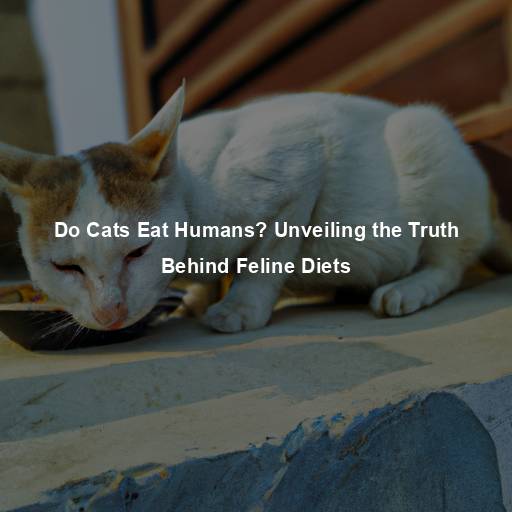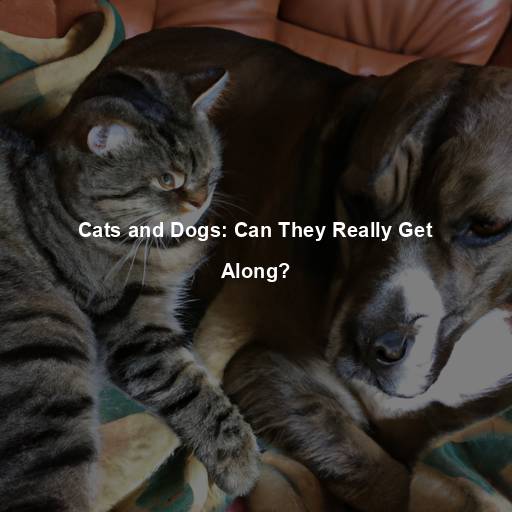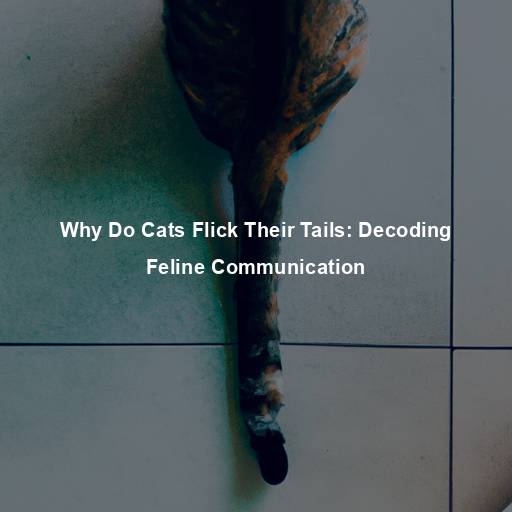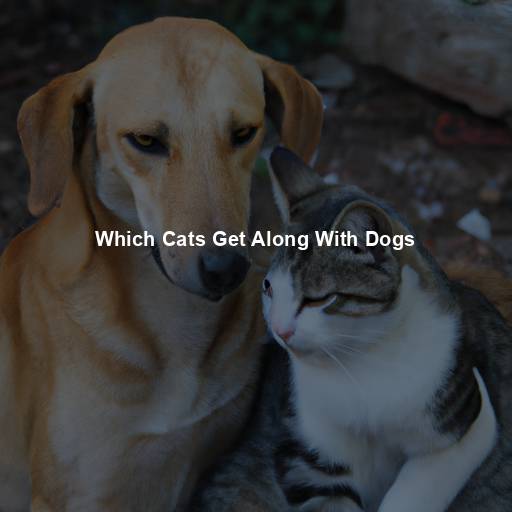Why Do Cats Love Padding?
Last Updated on July 12, 2023 by Evan
Contents
- 1 Understanding the Fascination of Cats with Padding
- 1.1 The Origins of Padding Behavior
- 1.2 Comfort and Relaxation
- 1.3 Marking Territory
- 1.4 Nostalgia and Bonding
- 1.5 Instinctual Behaviors
- 1.6 The Sensation of Texture
- 1.7 Environmental Enrichment
- 1.8 How to Encourage Padding Behavior
- 1.9 The Power of Muscle Memory
- 1.10 The Role of Scent in Padding
- 1.11 The Influence of Hormones
- 1.12 Cultural Factors and Individual Differences
- 1.13 Addressing Misconceptions
- 1.14 The Joy of Cat Guardianship
- 1.15 Uncovering the Evolutionary Roots
- 1.16 Instinctual Comfort and Security
- 1.17 Nurturing Bonds and Affection
- 1.18 The Need for Territory Marking
- 1.19 Sensory Stimulation and Tactile Pleasure
- 1.20 Emotional Release and Stress Relief
- 1.21 Encouraging and Supporting Padding Behavior
- 2 FAQs – Why do cats pad?
Understanding the Fascination of Cats with Padding
Throughout history, there has been no shortage of head-scratching moments when it comes to our feline friends and their fondness for padding. The bewilderment that engulfs us when we witness our cats gracefully kneading a blanket or our unsuspecting laps is a testament to the enigmatic nature of their behavior. So, what lies at the core of this captivating ritual? What fuels their deep sense of contentment as they rhythmically manipulate their paws?
The Origins of Padding Behavior
Have you ever wondered why our feline friends have a peculiar fascination with padding? It turns out, this puzzling behavior stems from their evolutionary roots. As adorable kittens, they would knead their mother’s belly to stimulate milk flow, ensuring they received a full tum and grew up to be strong, independent cats. But here’s where things get interesting – even as adults, cats still indulge in this quirky habit.
Comfort and Relaxation
Ever wondered why cats are so obsessed with padding? Well, it turns out that comfort and relaxation are top priorities for our feline friends. Just like us humans, cats find solace in curling up on a soft pillow or cozying under a warm blanket. But it’s not just about the physical sensation – padding actually releases those feel-good endorphins, making our furry companions feel safe, snug, and oh-so-happy.
Marking Territory
One fascinating conjecture proposes that the enigmatic ritual of padding exhibited by our feline companions is an intricate means of staking their claim on territory. Elongated within the paws of cats reside scent glands, and when they rhythmically knead, a cascade of pheromones is dispersed onto the locale they are tenderly padding. This chemical communication serves as an indelible imprint, alerting other cats that this expanse is unequivocally under their jurisdiction. Remarkably, this engaging behavior is particularly prevalent when a felid is introduced to a new milieu or when it endeavors to establish a sense of familiarity and absolute ownership.
Nostalgia and Bonding
For many cats, padding is reminiscent of their early days as kittens. The act of kneading and padding is deeply rooted in their memories of nursing from their mother. This behavior can evoke feelings of nostalgia and comfort, reminding cats of the warmth and security they experienced during their infancy. Additionally, when cats engage in padding on their human companions, it can also be seen as a sign of affection and bonding, similar to how they interacted with their mother and siblings.
Instinctual Behaviors
Cats have an intriguing way of clinging to their ancestral roots, even in today’s domesticated world. One such curious behavior that has stood the test of time is padding, a ritual embedded deep within their instincts. Regardless of whether or not they actually need to prepare a cozy nest, felines continue to engage in this enigmatic practice. It’s almost as if they are driven by an innate desire to honor their timeless heritage and stay connected with their wild counterparts.
The Sensation of Texture
The texture of the surface being padded can also play a role in a cat’s affinity for this behavior. Cats have highly sensitive paws, and they are able to discern subtle differences in textures. Softer materials, like blankets or plush cushions, provide a more enjoyable experience for padding. The gentle pressure on their paws combined with the tactile sensation of the fabric adds to the overall pleasure cats derive from this behavior.
Environmental Enrichment
Not only does padding offer a plethora of benefits already mentioned, but it also contributes to the overall well-being and happiness of our feline companions by providing them with an environment that is both mentally stimulating and physically engaging. By incorporating padding into their living spaces, we offer cats an avenue to satiate their innate instincts and fill their days with excitement and fulfillment. Especially for our indoor feline friends, padding acts as a much-needed antidote to the monotony and restlessness that can result from limited opportunities for exploration and play. With padding, these furballs can embark on a journey of mental and physical rejuvenation, finding solace and joy in their own little kingdom.
How to Encourage Padding Behavior
If you want to encourage your cat to engage in padding, there are a few things you can do. First and foremost, provide them with suitable surfaces for padding, such as soft blankets or cat beds. Place these items in areas where your cat likes to spend time, such as their favorite resting spots. Additionally, ensure that your cat feels safe and secure in their environment, as this will encourage them to engage in natural behaviors like padding.
The Power of Muscle Memory
Cats’ padding behavior is not just a random action; it involves a complex interplay of muscles and neurological processes. When a cat kneads, their paws go through a series of flexing and extending motions. This repetitive action helps to stimulate blood flow and loosen muscles, promoting relaxation and flexibility. The rhythmic nature of padding allows cats to activate their muscle memory, reinforcing the neural connections associated with this behavior.
The Role of Scent in Padding
It turns out that cats have a rather peculiar secret – hidden scent glands in their paws! Yes, you read that right. These little scent sacs actually have a crucial role to play in their adorable kneading behavior. You see, when cats knead on a surface, they leave behind their own special scent signature by releasing pheromones.
The Influence of Hormones
It’s truly fascinating how cats and their affinity for padding can be influenced by the intricate workings of their hormones. Among these hormones is oxytocin, affectionately known as the “love hormone”. When cats engage in this behavior, it stimulates the release of oxytocin, which has long been associated with emotions like bonding, trust, and a general state of relaxation. This hormonal phenomenon seems to foster a deep sense of contentment and well-being, solidifying the positive connection between cats and their preferred padding spots, whether it’s their surroundings or the company of their beloved humans.
Cultural Factors and Individual Differences
While padding behavior is seen in cats across different cultures and breeds, there can be variations in how frequently and intensely cats engage in this behavior. Some cats may exhibit more pronounced padding behavior due to genetic predispositions or early life experiences. For example, cats that were weaned too early or had positive experiences with padding during their early socialization period may display a stronger inclination towards this behavior.
Addressing Misconceptions
There are a few misconceptions surrounding cats’ padding behavior that need to be addressed. Firstly, some people mistakenly believe that cats only engage in padding when they are happy or content. While padding is often associated with positive emotions, cats can also knead when they are experiencing stress or anxiety. It is important to consider the overall context and body language of the cat to properly interpret their behavior.
There’s this pervasive myth that cuddly cats are the norm and those who don’t embrace padding are somehow defective or emotionally distant. But let’s set the record straight: feline padding habits run the gamut, showcasing a delightful array of idiosyncrasies. It’s crucial to appreciate that every cat possesses a distinctive persona, complete with their own distinct likes and dislikes. So, don’t be quick to judge a cat for being less cuddly – they might just have their own enigmatic way of showing affection.
The Joy of Cat Guardianship
Understanding why cats love padding adds another layer of appreciation to the joy of cat guardianship. It allows us to connect with our feline companions on a deeper level and respond to their needs and desires. By providing them with suitable surfaces for padding and creating a safe and enriching environment, we can enhance their overall well-being and strengthen our bond with them.
As we ponder the enigmatic allure of our feline companions, we are drawn into the mesmerizing world of the animal kingdom. With each delicate step, cats silently unveil a tapestry of instinctual impulses and individualistic charm that never fails to amaze. Take a pause, dear reader, and let yourself be spellbound by the intricate dance of nature and the inexplicable bond we share with these captivating creatures.
Uncovering the Evolutionary Roots
Have you ever wondered why cats have this peculiar habit of kneading and padding? Well, the answer lies in their deep-rooted evolutionary history. It all goes back to the wild days when our furry friends’ ancestors roamed freely. In those untamed habitats, cats would use this behavior to fashion themselves a cozy nest before settling down or bringing new life into the world.
Instinctual Comfort and Security
There’s something undeniably captivating about a cat’s affection for padding. It’s as if their paws have a secret code to unlock a world of comfort and serenity. Through their rhythmic kneading, cats tap into the enchanting power of endorphins – those delightful chemicals that bring a natural high to their feline minds. It’s like reliving the snug embrace of their first nursing moments, whisking them away to a place of pure bliss and tranquility.
Nurturing Bonds and Affection
It’s fascinating how cats never outgrow their endearing padding behavior. From their early days of nursing to adulthood, this peculiar habit spills over to their beloved human companions. When cats curl up on their owners’ laps or snuggle close, it’s not just a cozy display; it’s an intimate act of bonding and affection. These feline friends have learned that padding brings them moments of comfort, connection, and undivided attention, further reinforcing the profound emotional ties they share with their caring human caregivers.
The Need for Territory Marking
Cats are territorial animals, and padding serves as a means of marking their territory. The scent glands located in their paws release pheromones onto the surface they are kneading, leaving behind their unique scent signature. This scent communicates to other cats that the area has been claimed and helps establish a sense of ownership. By engaging in padding, cats assert their presence and mark their territory, both in the wild and within our homes.
Sensory Stimulation and Tactile Pleasure
The sheer delight cats find in padding is bound up in the tactile experience it offers. With their incredibly sensitive paws, they can discern the subtlest of textures, making it all the more perplexing and intriguing for them. Opting for softer materials like cozy blankets or plush cushions takes their padding adventure to a new level of burstiness, heightening the felicitous dance between their delicate paws and the fabric’s touch. It’s a symphony of sensations that keeps our feline friends engaged and satisfied, transforming this simple act into a truly blissful affair.
Emotional Release and Stress Relief
Padding also serves as a form of emotional release and stress relief for cats. Just like humans engage in activities like knitting or squeezing stress balls, cats find comfort in the rhythmic motion of padding. This behavior helps them release pent-up energy and tension, allowing them to relax and unwind. It acts as a natural stress reliever, promoting emotional well-being and helping cats cope with various stimuli in their environment.
Encouraging and Supporting Padding Behavior
As cat guardians, we can create an environment that encourages and supports our cats’ padding behavior. Providing soft and comfortable surfaces, such as blankets or cat beds, can entice cats to engage in padding. Placing these items in areas where cats like to rest or spend time can further encourage the behavior. Additionally, ensuring that our cats feel safe, secure, and enriched in their environment can promote natural behaviors like padding.
FAQs – Why do cats pad?
Why do cats pad their paws?
Cats have a natural instinct to knead or pad their paws on soft surfaces. This behavior is often observed when cats are comfortable, happy, or content. It is a remnant of their kittenhood when they used to knead their mother’s mammary glands to stimulate milk production. Kittens would often knead while nursing and would associate this action with comfort and nourishment.
What is the purpose of kneading for cats?
Kneading serves multiple purposes for cats. Apart from being a comfort behavior, it also helps them mark their territory. Cats have scent glands located in their paws, and these glands release scents when they knead. By kneading, they are essentially marking their territory with their scent, which can serve as a form of communication to other cats. Additionally, kneading can also help cats stretch their muscles and keep their paws in good condition.
Is kneading a sign of affection?
Cats and their mysterious ways never cease to amaze us. Have you ever wondered why your feline friend likes to knead on you or on a soft surface? Well, here’s the scoop – it’s a delightful display of affection! When a cat kneads, it’s like they’re giving you a badge of honor, letting you in on their inner circle of trust and comfort. You might even be lucky enough to hear some sweet purring, which is a telltale sign that they’re feeling extra content and relaxed. But don’t be fooled – cats have their own unique personalities, so some may knead more than others. It’s just another delightful mystery in the enchanting world of cats!
Why do some cats drool while kneading?
Some cats exhibit a behavior known as “kneading with drooling.” This happens when the act of kneading triggers a cat’s salivary glands to produce excessive saliva. It is considered normal in most cases and often relates to the cat’s contentment and relaxation during the kneading process. However, if the drooling becomes excessive or is accompanied by other concerning symptoms, it is recommended to consult a veterinarian to rule out any underlying health issues.
Can you discourage kneading behavior in cats?
As cats’ kneading is an inherent behavior, completely eradicating it may not be a viable option. Nevertheless, if the kneading becomes bothersome, there are several tactics to consider. Assigning a dedicated cozy surface, like a plush blanket or a cat bed, might divert their kneading tendencies from your possessions or person. Moreover, regularly trimming their claws can alleviate any discomfort caused when they knead on you. Ultimately, grasping and embracing this behavior as an integral facet of a cat’s nature can foster a harmonious bond with your feline companion.







